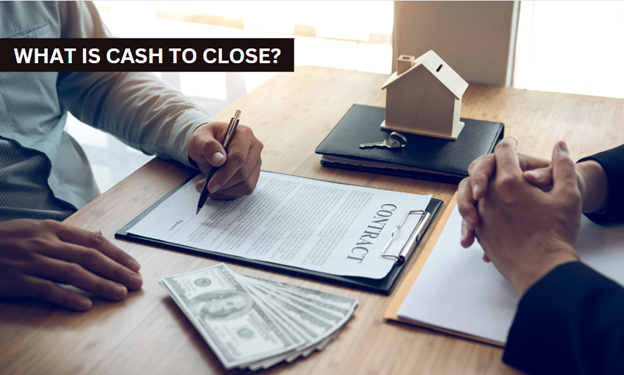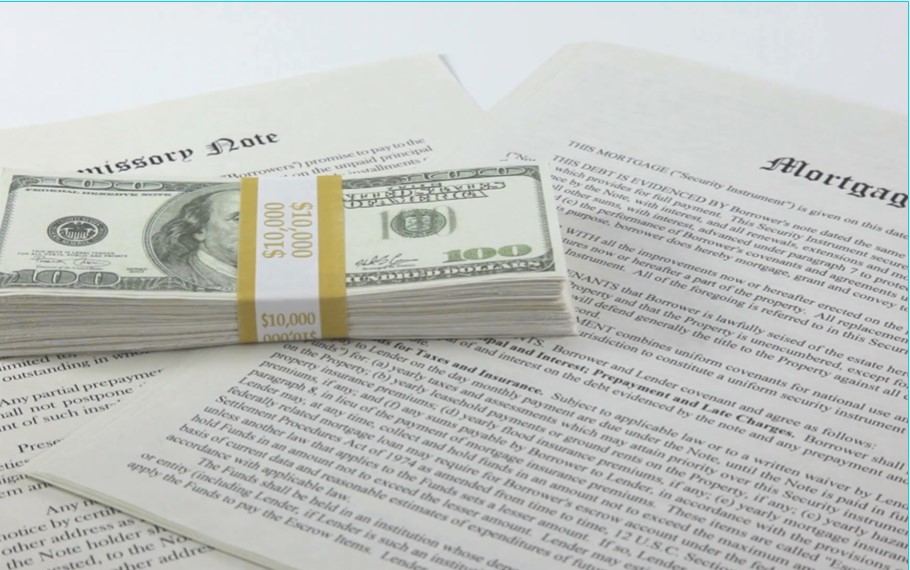 “Cash to Close” refers to the total amount of money that a homebuyer needs to bring to the closing table to complete the purchase of a property. It includes the down payment, closing costs, and other fees associated with the home purchase.
“Cash to Close” refers to the total amount of money that a homebuyer needs to bring to the closing table to complete the purchase of a property. It includes the down payment, closing costs, and other fees associated with the home purchase.
How is it Calculated?
The cash to close amount is calculated by subtracting any applicable credits, such as earnest money or seller contributions, from the total amount of funds needed to complete the transaction. The resulting figure represents the final amount of cash that the buyer needs to bring to the closing.
It’s important for homebuyers to carefully review their “Cash to Close” statement before closing to ensure that they have enough funds available to cover the required amount. The statement will typically be provided by the lender or title company several days before the closing date.
The Difference Between Cash to Close and Closing Costs
Cash to close and closing costs are both important concepts in the home buying process, but they refer to different things.
Cash to close refers to the total amount of cash that a homebuyer needs to bring to the closing table to complete the purchase of a property. This includes the down payment, closing costs, prepaid expenses (such as property taxes and homeowners insurance), and any other fees associated with the home purchase.
Closing costs are the fees and expenses associated with obtaining a mortgage loan and closing the real estate transaction. They can include loan origination fees, appraisal fees, title search and insurance fees, attorney fees, and other charges. Closing costs are typically paid at the closing table, but they can sometimes be included in the mortgage loan amount.
Do I Need Actual Cash to Close?
While the term “Cash to Close” may suggest that you need to bring actual physical cash to the closing table, in reality, you typically do not need to bring cash. Most real estate transactions are settled using wire transfers, certified or cashier’s checks, or electronic transfers, rather than physical cash.
When you receive the “Cash to Close” statement, it will provide you with the total amount of funds needed to complete the transaction. You will then typically work with your lender and/or closing agent to arrange for the transfer of these funds to the appropriate parties.
It’s important to note that the exact payment methods and requirements may vary depending on the specific transaction and location. You should work closely with your lender and/or closing agent to ensure that you understand the payment process and have the necessary funds available in the appropriate form.

 After you have found the right house to meet your needs, you need to make the down payment to complete the transaction. Can you show up at the closing table with a suitcase full of cash? Of course, that would be a bit suspect, so that is not actually how it happens. What do you need to do to actually hand over the funds to buy the house?
After you have found the right house to meet your needs, you need to make the down payment to complete the transaction. Can you show up at the closing table with a suitcase full of cash? Of course, that would be a bit suspect, so that is not actually how it happens. What do you need to do to actually hand over the funds to buy the house?  There are some people who are able to pay cash for a home. Typically, these are individuals who are selling an existing property that has gone up in value. Now, all of a sudden, they have a lot of extra money they can spend on a house. If you can pay cash for a home, you have a lot of extra negotiating power. When it is time to complete the sale, who pays?
There are some people who are able to pay cash for a home. Typically, these are individuals who are selling an existing property that has gone up in value. Now, all of a sudden, they have a lot of extra money they can spend on a house. If you can pay cash for a home, you have a lot of extra negotiating power. When it is time to complete the sale, who pays? Savvy home buyers who are preparing to make a real estate purchase should do their research and understand that they need to save money for not only the down payment but the closing costs as well. The closing costs can account for as much as three to five percent of the sales price in some cases, so this can be a rather sizable amount of money. Some home buyers however, may not realize that the amount of closing costs can vary considerably based on the home that is purchased. With a closer look at why this is, home buyers can make a more educated decision when selecting a home to purchase.
Savvy home buyers who are preparing to make a real estate purchase should do their research and understand that they need to save money for not only the down payment but the closing costs as well. The closing costs can account for as much as three to five percent of the sales price in some cases, so this can be a rather sizable amount of money. Some home buyers however, may not realize that the amount of closing costs can vary considerably based on the home that is purchased. With a closer look at why this is, home buyers can make a more educated decision when selecting a home to purchase. It’s amazing that in a year with extremely low mortgage rates being reported around the country, closing costs are up by as much as 6% from the previous year. Part of the reason for this is that the stricter regulations on loans have increased the costs to banks, and they always find a way to pass on new costs to the consumer.
It’s amazing that in a year with extremely low mortgage rates being reported around the country, closing costs are up by as much as 6% from the previous year. Part of the reason for this is that the stricter regulations on loans have increased the costs to banks, and they always find a way to pass on new costs to the consumer.